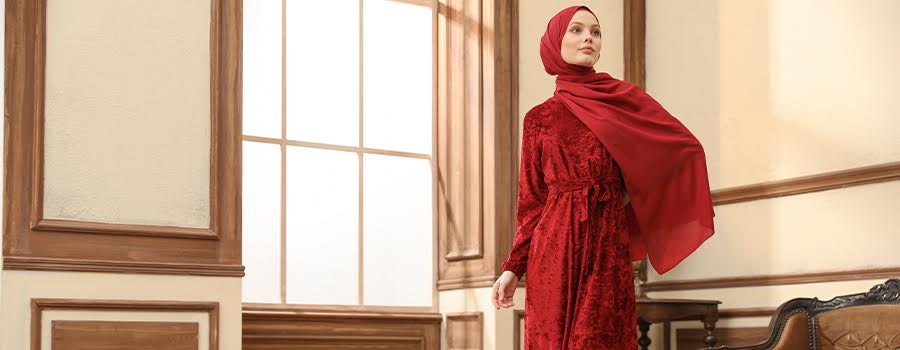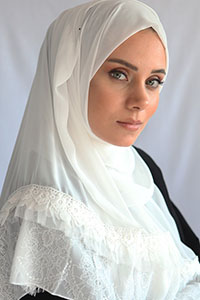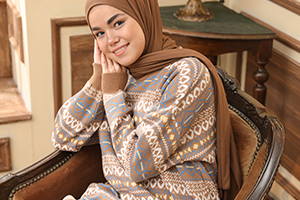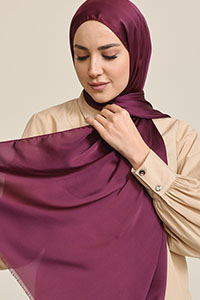
Different Hijab Styles by Country
Hijab is an crucial part of Islam and provides both spiritual and physical peace and harmony to the Muslim woman. Hijab styles vary by region, country, and culture due to the hijab's long history. There are numerous hijab styles and ways to wrap it and incorporate it into an outfit. It would be false to claim that a fully right or wrong way to wear a hijab exists.
From Afghanistan to Pakistan, each country has its own traditional and different hijab style that women wear with pride. Each country has its own style that should be admired and celebrated. In this article we will discuss different hijab styles by country. As a disclaimer, these are generalizations, and women from any country are free to wear the hijab as they see fit.
Hijab Style of Pakistan
The Pakistani way, also known as the dupatta, is to drape the scarf loosely around the head, allowing some hair to peek through in the front. The colors range from dark to bright and correspond to traditional ethnic clothing. Such a hijab style is always elegant, classy, and adaptable to any desired look.
Hijab Trends of Syria
Syrian women frequently dress up their hijab pinched around their heads. They frequently wear undercaps and make drapes at the top of their heads to add a distinctive design. In addition to completely covering the hair, this style covers the neck and a portion of the chest.
Hijab in Palestine
The Palestinian hijab is a tightly wrapped scarf that covers the hair and neck completely. An undercap is usually worn to add volume and to make sure the hijab stays in place as preferred.
Hijab Style of Turkey



The Turkish hijab is very fashionable and elegant. The scarf is tied into an elegant bow on one side of the neck to add a feminine, chic look while still providing full coverage. The hijab looks best when worn with volume and a simple knot or bow to keep it in place.
Hijab Styling in Iran
Women in Iran frequently wear the chador, a type of hijab. It is a lengthy piece of fabric that drapes over the head and reaches to the waist. The chador, usually black, has a versatile, classy, and dashing look.
Fashionable Hijabs of Malaysia
Perhaps one of the most striking styles comes from Malaysia when talking about different hijab styles by country. Malaysia, which is a hotspot for new Islamic fashion trends, is the epicenter of all new hijab trends. Malaysian hijabs are frequently light or brightly colored, with floral patterns. Drapes are lovely pieces designed to add volume and full coverage to the hair.
Hijab Fashion in Indonesia
Indonesia, like Malaysia, is always on the lookout for new hijab trends. Indonesian-style hijabs completely cover the hair and may include undercaps beneath the hijab to make your appearance more neat and one-of-a-kind. Certain hijabs can be given extra volume by attaching floral designs.
Hijab Culture in Afghanistan
Afghan women have traditionally worn the burqa, a distinctive type of hijab. The burqa is a long garment that is draped over a woman's head and often reaches her knees or ankles. This covers the entire face and allows for the eyes to be seen through a net-like fabric. Burqas can be any color, but they are usually blue in Afghanistan.
Elegant Beauty of Hijabs in Ethiopia
The Ethiopian hijab is wrapped around the head like a turban. The turban completely conceals the head and hair. Turbans can be made of plain fabric or elaborate, colorful, traditional types. Pins and brooches can be used to secure turbans.
Hijabs of Somalia
Somali women, like Ethiopian women, wear their hijabs with a turban. Long scarves can be used to make turbans for a more volumized look. Women can also add color and pattern by wearing an undercap. Earrings, for example, can be worn.
We have broken down different hijab styles by country. The hijab means so much more than just a material of clothing worn by Muslim women. It is a symbol of a proud Muslim woman worshiping Allah by wearing the hijab in any style. These are just a few instances of how the hijab is elegantly worn in different countries. The hijab unites Muslim women of all ages, cultures, ethnic groups, and nationalities.